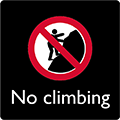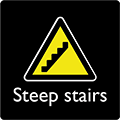Free Entry
Founded in about 1148, this Augustinian abbey became a private residence after the Reformation, and was severely damanged during the Civil War during a Parliamentarian siege. Despite that, much of the church survives, and is viewable from gallery level. There is also a lavishly sculpted processional door and other cloister buildings.
Read more about the history of the abbey.
Before You Go




Opening Times: Open daily, 10am-6pm from April to the end of September and 10am-4pm from October to the end of March.
Access: The site is accessed via a kissing gate, which may be unsuitable for visitors using mobility aids or pushchairs. There is uneven ground and low lying walls and features. There is a spiral stairway off the nave which is narrow and dark.
Parking: There is very limited parking at the Abbey entrance which is only accessible April to mid-October. During the winter park at the gateway entrance and use the pedestrian gate by the road to walk the 250m to the abbey.
Facilities: Nearby Boscobel House and the Royal Oak has a tearoom, shop and toilets.
Drone flying: Please see our Drone guidance
Please do not climb on the walls.
Dogs: Dogs on leads are welcome.
Plan a Great Day Out
Enjoy a picnic in this peaceful spot while admiring the elaborate stone carving.
A short drive away you'll find White Ladies Priory and Boscobel House and the Royal Oak, both famous for their roles as hiding places for the future King Charles II after his defeat in the Battle of Worcester in 1651.
At Boscobel you can see the priest-hole Charles hid in, take a tour around around the manor house, stroll around the restored knot garden and visit the Victorian farmyard. A tearoom in the old stables serves home-made cakes, light lunches and hot and cold drinks.
Your Places Appeal
Did you know over 300 of our historic sites are free to explore and enjoy, but keeping them open and cared for costs more than £4.2 million every year?
With your help, we can protect these historic places and make sure they can be enjoyed for generations to come.
Whether your donation today helps pay for the work of an expert stonemason, a key keeper’s time to unlock the gates or the restoration of a rare artefact, you’ll help care for precious heritage.
Donate today